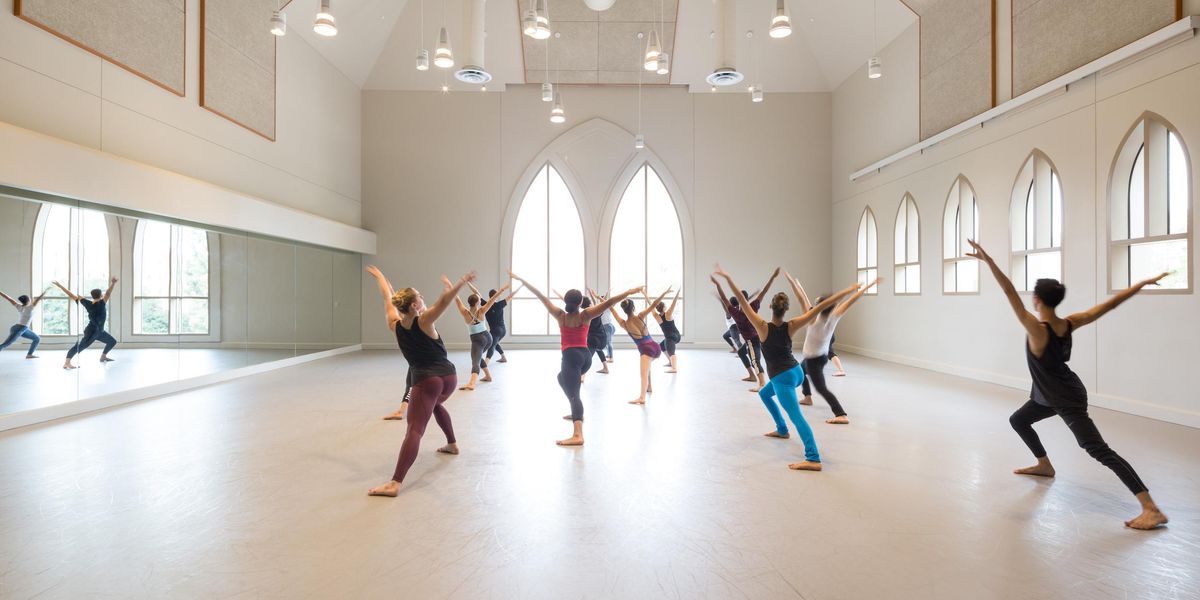On Broadway: Tapping a Legacy
Original American Dance Machine members perform Fosse’s “Rich Man’s Frug” from
Sweet Charity. Photo from DM Archives.
In one of the famous questions of world literature, the French Renaissance poet François Villon asks, “Where are the snows of yesteryear?” In the world of Broadway musicals, the question would be, “Where are the dances?”
The dialogue of bygone shows is available in old scripts. Songs can be resurrected from scores, sets from photos and models. But for the most part, the dances are gone—alive in the memories of those who saw them, perhaps, but retrievable only from the minds of those who made or performed them.
All too often, those dancers and choreographers have moved on to other shows and forgotten what they did. And even if they remember, eventually they die. The steps and patterns that propelled a hit show, or sparked a new way of thinking about Broadway choreography, or jolted an audience out of its torpor at some otherwise ho-hum entertainment, are all lost to history.
In 1975, a former show dancer named Lee Becker Theodore—she had played the tomboy Anybodys in the original Broadway cast of West Side Story—decided to try to change that with a “living archive.” She created a dance company and training program to preserve Broadway’s choreographic legacy. She called it the American Dance Machine, and she kept it going until her death in 1987.
A lot of dance breaks have come and gone since then—“so many great old treasures,” says Nikki Feirt Atkins. She had abandoned her dance career for medicine but stepped back in with both feet this year as founder and executive director of the American Dance Machine for the 21st Century. She had been on a ballet track when a class with Matt Mattox turned her toward the sexy, swinging ways of jazz dance.
She began ADM21 after a stint working with Chet Walker, the creator of Fosse, on his effort to resuscitate the dances of jazz choreographer Jack Cole. (His evening-length anthology of 28 Cole numbers, Heat Wave: The Cole Project, had a run in spring.) By her own admission, Atkins became “obsessed.” And wanting to widen the curatorial focus, she came up with the notion of reviving Dance Machine.
She enlisted Margo Sappington, whose career as a dancer and choreographer spans both ballet and Broadway, to be artistic director. And this spring they unveiled the first fruits of their labor: Michael Bennett’s choreography for A Chorus Line’s “Music and the Mirror,” coached by the dancer on whom it was made, Donna McKechnie; Sappington’s remounting of Hermes Pan’s “Smoke Gets in Your Eyes,” made for Marge and Gower Champion in the film Lovely to Look At; and “Mr. Monotony,” from Jerome Robbins’ Broadway, staged by one of its original trio, Robert La Fosse.
One difference between the first ADM and the 21st-century version, which had its debut performance in June, is Sappington’s insistence on giving the dances a context. “Every musical theater dance has a purpose,” she says. “These dances are not created in a void.” So she’s made the supporting dialogue an integral part of the program. “Music and the Mirror” is famously a female solo, but the ADM21 version includes a non-dancing actor to play the scene that sets up the number. “It just makes all the difference,” Sappington adds. “You really understand who Cassie is.”
Many of the performers chosen by Atkins and Sappington—Charles Askegard and Sarah Weber Gallo for the ballroom-y “Smoke,” and Georgina Pazcoguin, Amar Ramasar, and Daniel Ulbricht for the earthy “Mr. Monotony”—come from ballet. “A classical background lends richness to the choreography,” Atkins says. “That line, that clarity, that crispness—that’s what Matt Mattox had, and Bob Fosse as well.”
Needless to say, Fosse is on the ADM21 wish list, along with a gamut of Broadway dancemakers. One of the historic numbers Sappington is eager to add is Bennett’s comic trio “Turkey Lurkey Time” (from Promises, Promises), which she herself danced on Broadway with McKechnie and Baayork Lee. Before any of that can happen, more money needs to be raised, more rights secured, more dancers trained in the appropriate styles. One big step toward these goals begins this fall, with the planned opening of The School at ADM21, which will eventually have not just dance classes but a complete musical theater curriculum. Ultimately, if Atkins and Sappington succeed, Broadway will finally have an answer to the question “Where are the dances of yesteryear?”
Sylviane Gold writes on theater for
The New York Times.




